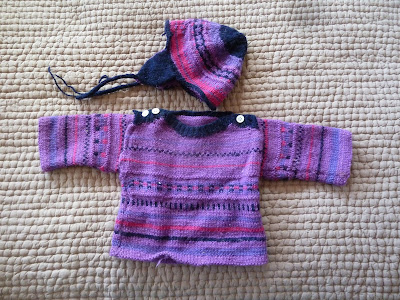Perhaps in perusing the above photo, your eyes were seized by the same notice that captured me.
This reminded me that even though it's still August, it's not too early to think about knitting something to contribute to a cold-weather clothing drive, whether it's a hat, scarf, a pair of mittens--or even a kid's sweater, if you're feeling ambitious. I recently researched the history of charitable knitting for an article that's just out in the latest Interweave Knits Holiday Gifts 2013. It's called "Knitting for Charity: The Perennial Spirit of Giving" (pages 18-23) and as I worked on the piece, I found it fascinating to learn that knitting for charity in this country dates to the Revolution (at least the records do--possibly the practice began even earlier). When you knit an item for charitable distribution, you join a great historical continuum of American knitters. That's kind of wonderful, IMHO.
The article provides a list of databases for charitable knitting, some of which are keyed to specific regions of this country and even the world. If you'd like to donate a knitted something to a charity closer to your home than the Pioneer Valley of Massachusetts, or that serves a specific population (like veterans, Afghani children, preemies), you can find the perfect match for you on one of these. Anyway, this is a shameless plug: the article is a fount of information, and if you buy the magazine you get a bunch of excellent patterns and articles as well!
Charitable knitting works two ways. One is to knit something and give it away. Another is to raise money, through selling knitting or through a related endeavor, like the sale of a pattern or a book of patterns, then donate that money to a cause. Such is the mission of a book (published by Sixth and Spring) that's been around since last year: Knit Red: Stitching for Women's Heart Health, by Laura Zander of the Jimmy Beans Wool company.
Well, here's the moral of my disquisition. Whatever you want to do is fine--just don't knit there, do something! Regardless of the intended recipient, it's the charitable act itself that sends lots of good energy into the world.








